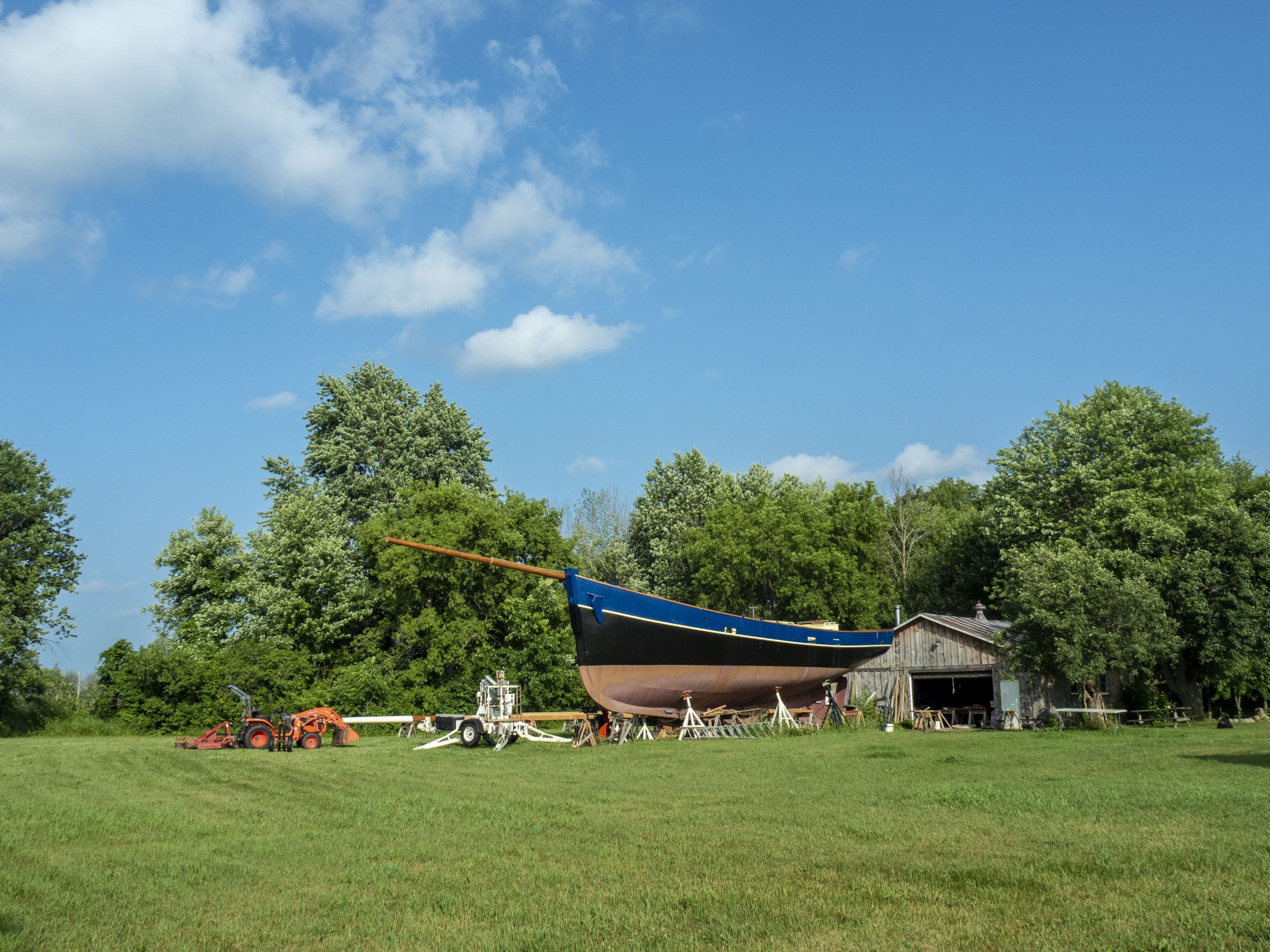First SteP
Moving To The Country
The first logistical challenge in building a boat—especially a 30-ton giant—was the question of where. We explored different options, all constrained by the same condition: we wanted to live and build in the same place.
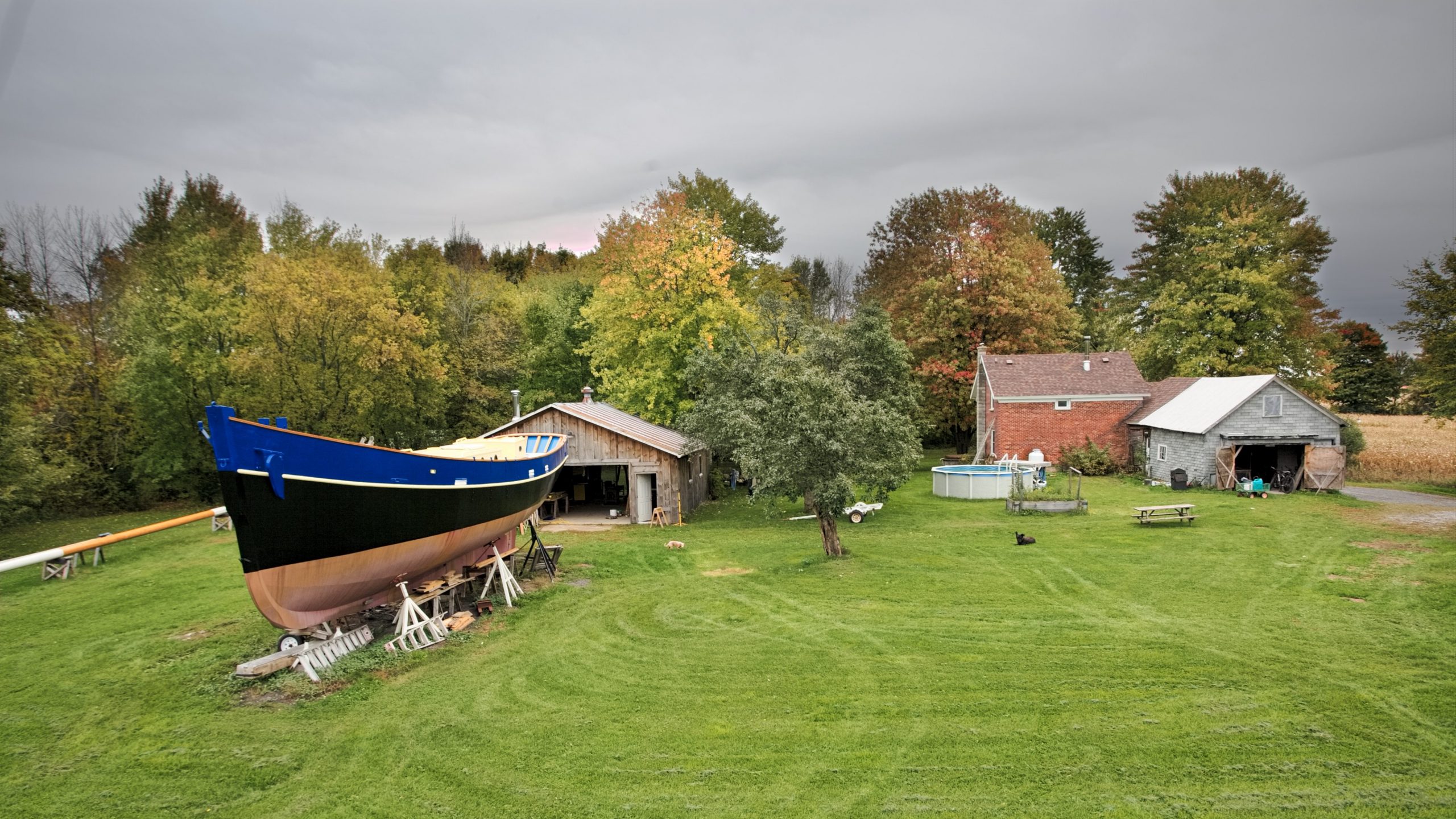
In June 2003, we decided to buy a house in the country, and that’s where we settled. We were fortunate to find a charming property, but it took us a full year to prepare before we could even begin building. The house needed significant work, and the shop… well, it needed even more.
The truth is, the house was something of a wreck. This old century farmhouse had been neglected, and much of the property had been mistreated.
Romantic dreamers that we are, we saw a little slice of paradise: a few acres of our own, tucked away just enough that we wouldn’t have to worry about neighbors.
One of our key requirements was a workshop set apart from the house—somewhere the welding fumes and dust could be contained to the work area.
Driven by necessity (and perhaps a touch of optimism), we convinced ourselves we could turn this into a proper shop.


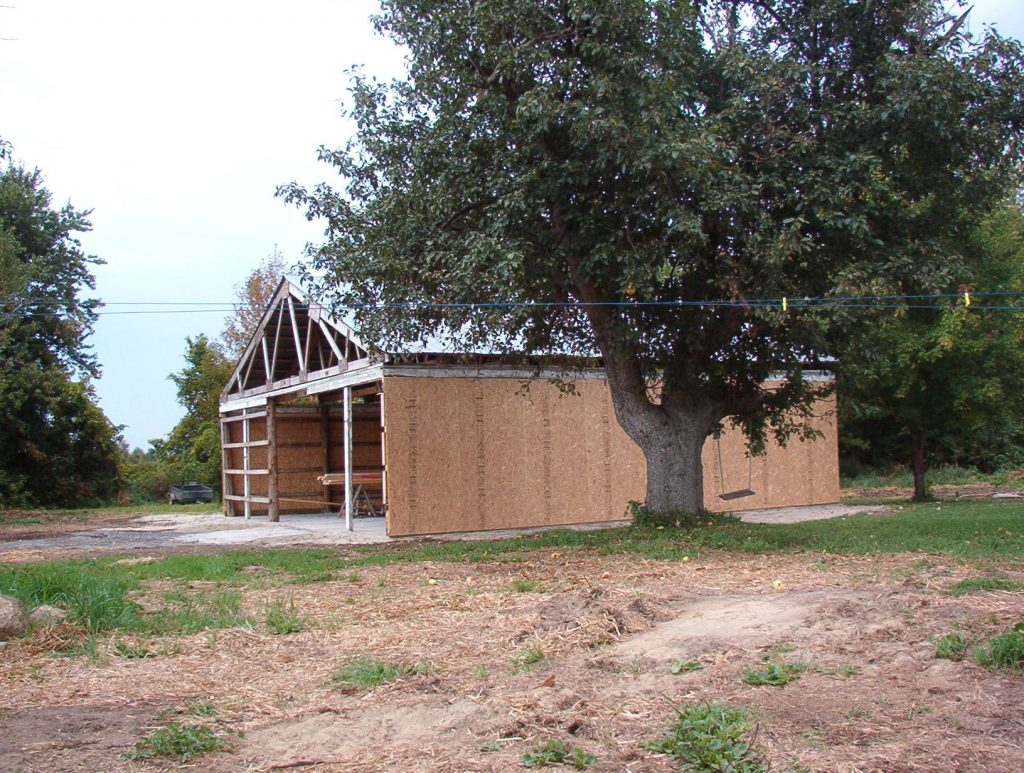
We brought the barn down to poles and a roof, pored a cement slab and built new walls. In retrospect, it might of been easier to build from scratch.
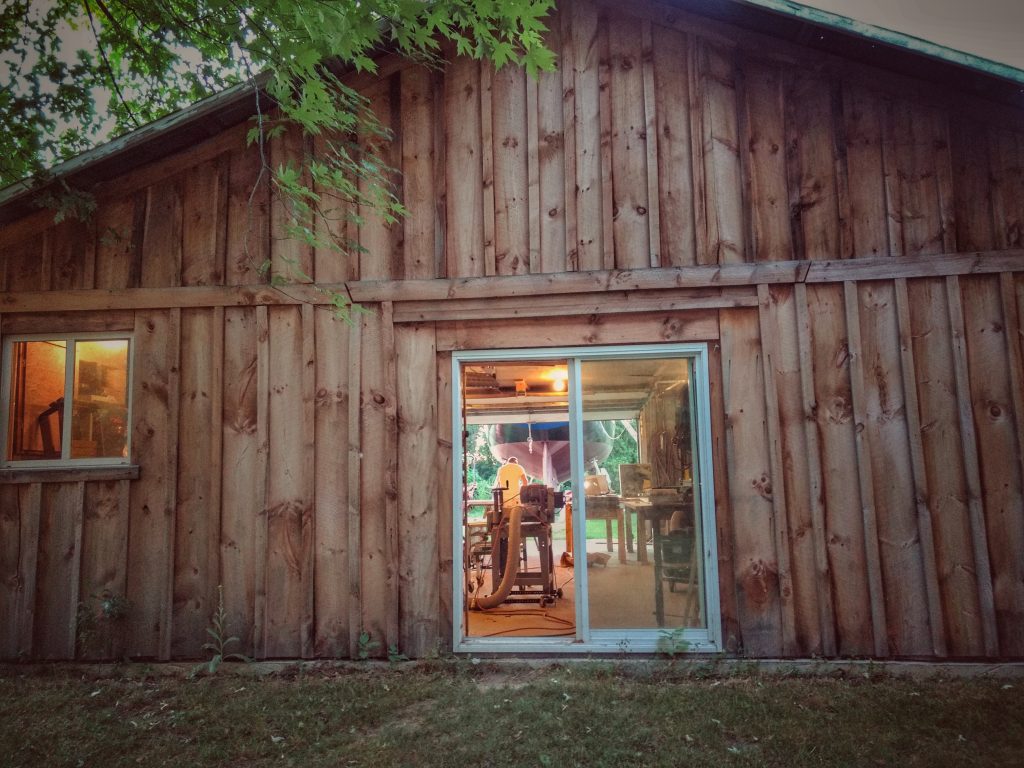
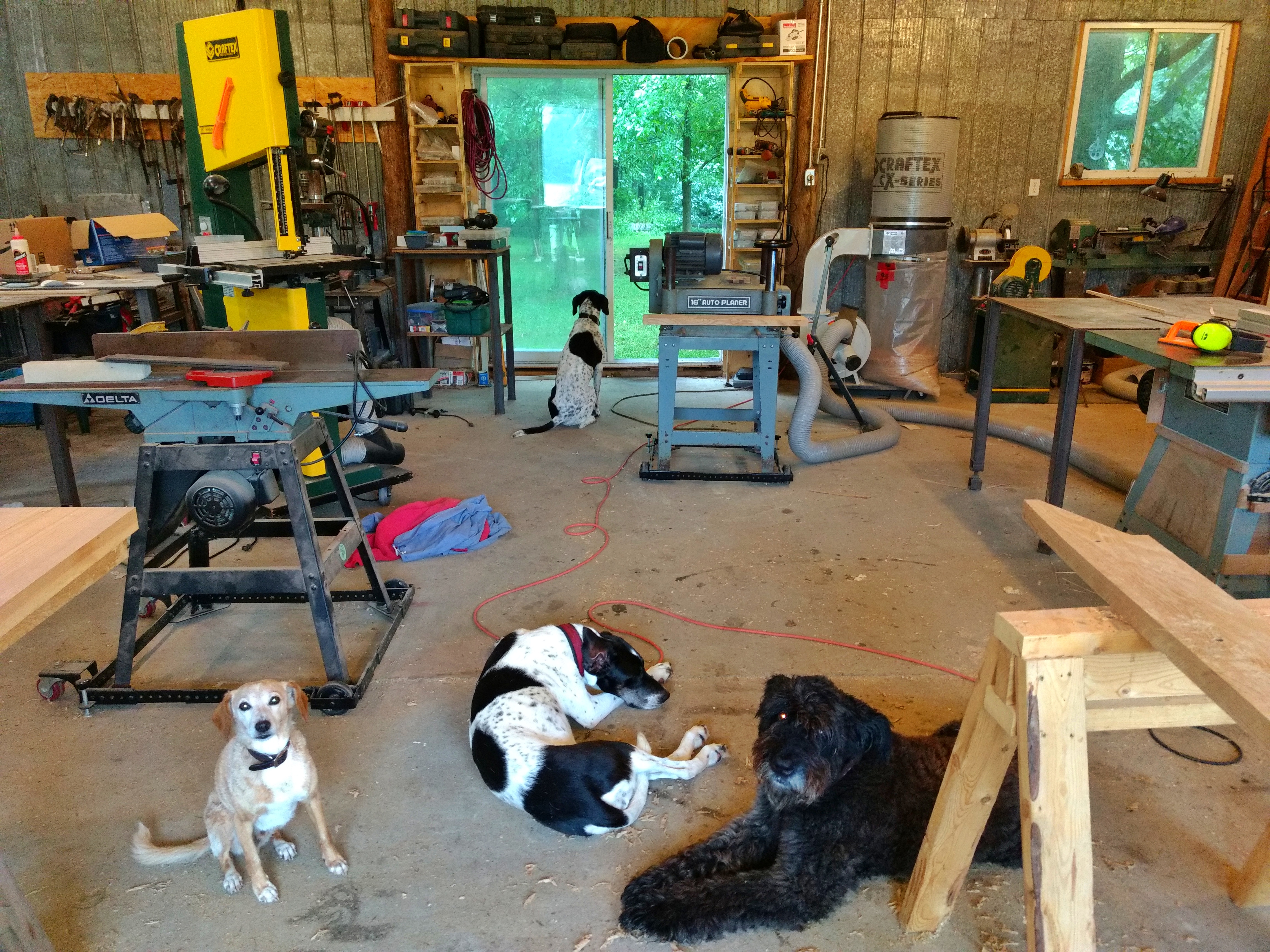
Looking back, I’m certain our choice of location saved us time, money, and no small amount of stress. Boatbuilding is always expensive and demanding, but buying this little country property turned out to be the single most important decision we made. It gave us more than just space—it gave us a way of life that made the work sustainable.
The comforts were simple but essential: proper lunches from our own kitchen, no commute, a quick dip in the pool on sweltering days, or the warmth of the house when winter set in. The neighbors were distant, the regulations permissive, and with no fear of complaints we could work at our own rhythm. We kept the place tidy, convinced that a neat space kept the mind clear.
What made it even better was the life around us. Dogs, a cat, chickens, ducks—creatures roaming free, offering a laugh or a smile every single day. Their presence grounded us, reminding us that this was more than just a building site; it was home.
And living where we built gave us more than time. We didn’t need to set up and pack down each day, or guard every break with the chore of storing tools. If the weather looked doubtful, we could simply try—and even two hours of progress was worthwhile.
The challenge, of course, was resisting the pull of the hammock on sunny afternoons. But somehow, despite the temptations, the work always carried on.
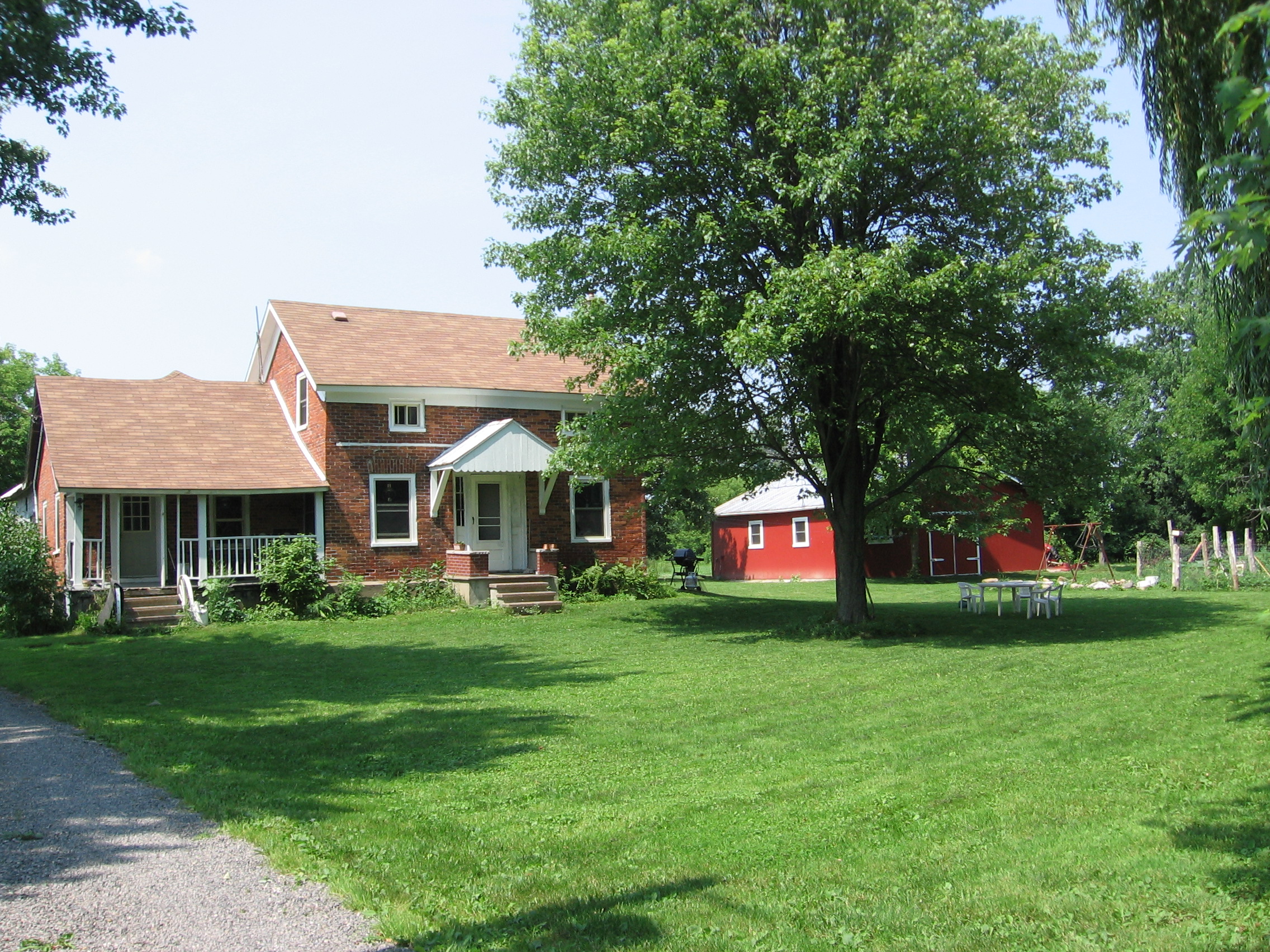
And of course, with a farm comes the need for a tractor! I’ve never been able to resist anything painted red, so we brought home a charming little International B250. From hauling heavy loads to bush-hogging the back field, it pulled far more than its fair share. Already over sixty years old when we bought it, that little tractor still served us faithfully and proved its worth time and again.

We are doing fine with the B250 but if we were to do it again we would spend a little more money and get a tractor with down pressure on the bucket and power steering.
Quote from the past, we made the move
The little red tractor never let us down, but eventually we felt the need for an upgrade and brought home a sleek Kubota B26… complete with a backhoe! The plan was simple: put the backhoe to work around the yard, then sell it. But who ever really gets rid of a backhoe?
Honestly, if I had to do it all over again, I’d go straight for the modern machine with good hydraulics and a down-pressure bucket. It makes life—and work—so much easier.

It’s amazing how much work goes into just getting ready to build. Once the shop was up, we still had to set it up properly. While tools don’t make the craftsman, good tools and a well-organized workspace are invaluable. A clean, orderly setup not only encourages better work but also ensures safety. Mark is a bit of a safety fanatic… and honestly, I agree—keeping all my body parts intact and functioning is a good plan.
I didn’t want to be working off the floor any more than necessary; there was already plenty of awkwardly positioned work ahead. So I built several steel welding tables of different sizes with adjustable feet, allowing me to move them around and support large pieces, like boat ribs, on a flat plane. My two main tables have tops made of ½-inch steel—nice and heavy—while the rest are lighter, with 1/8-inch steel tops, serving double duty: one as a table saw extension, the other as a chop saw bench.
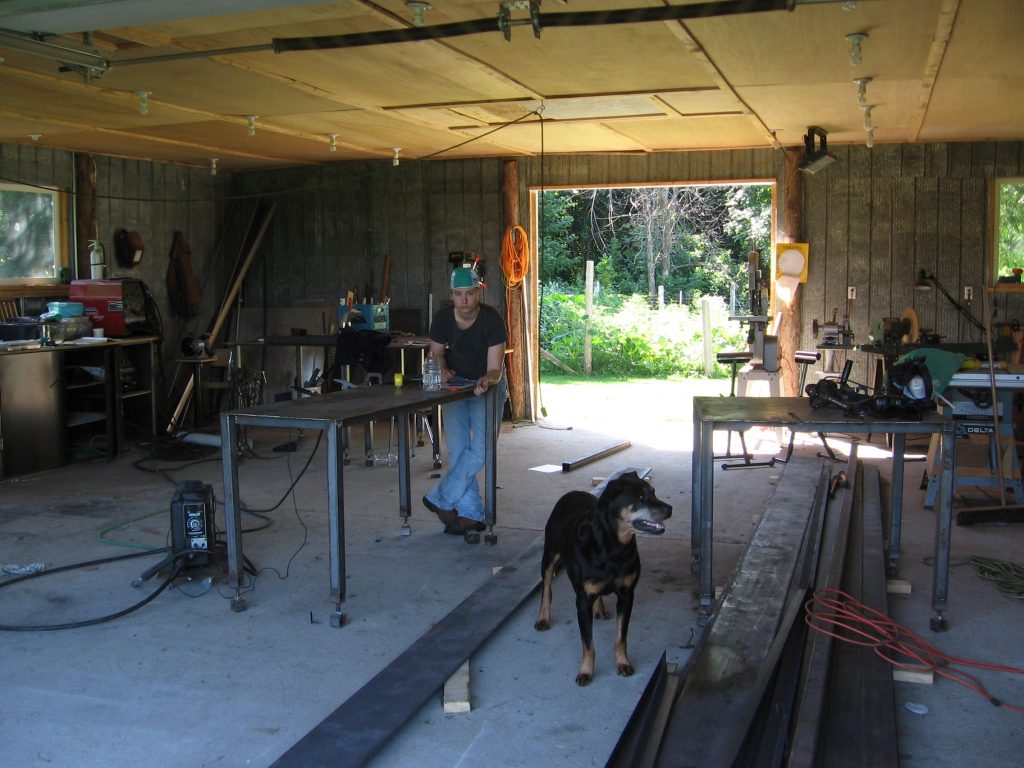
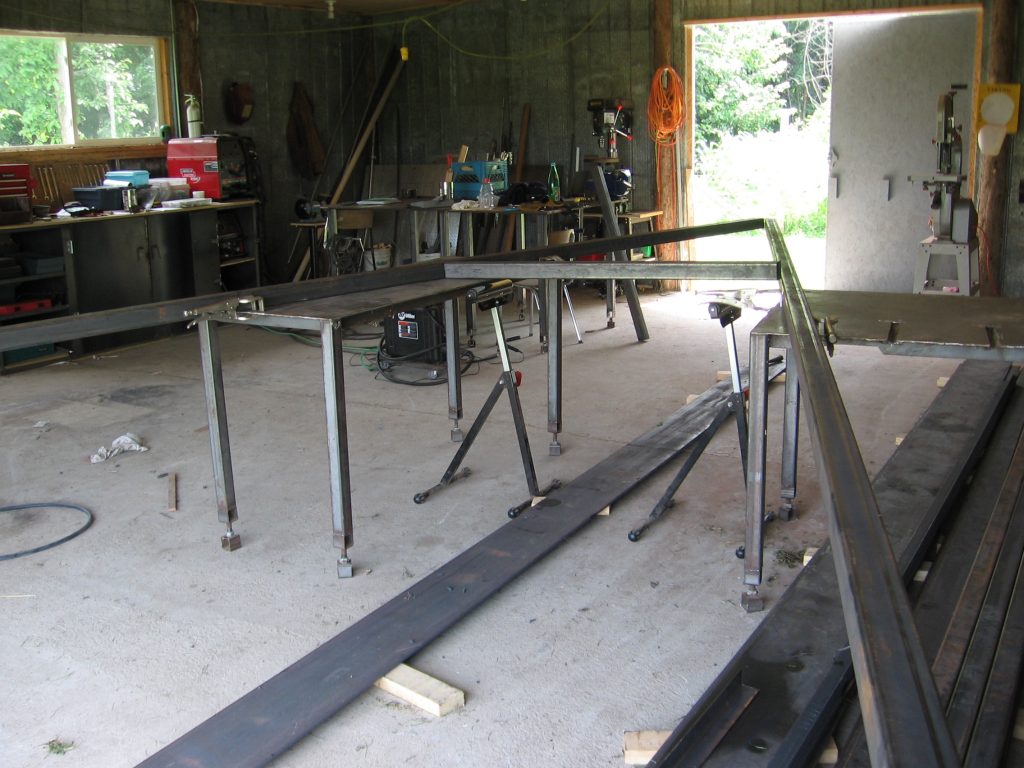
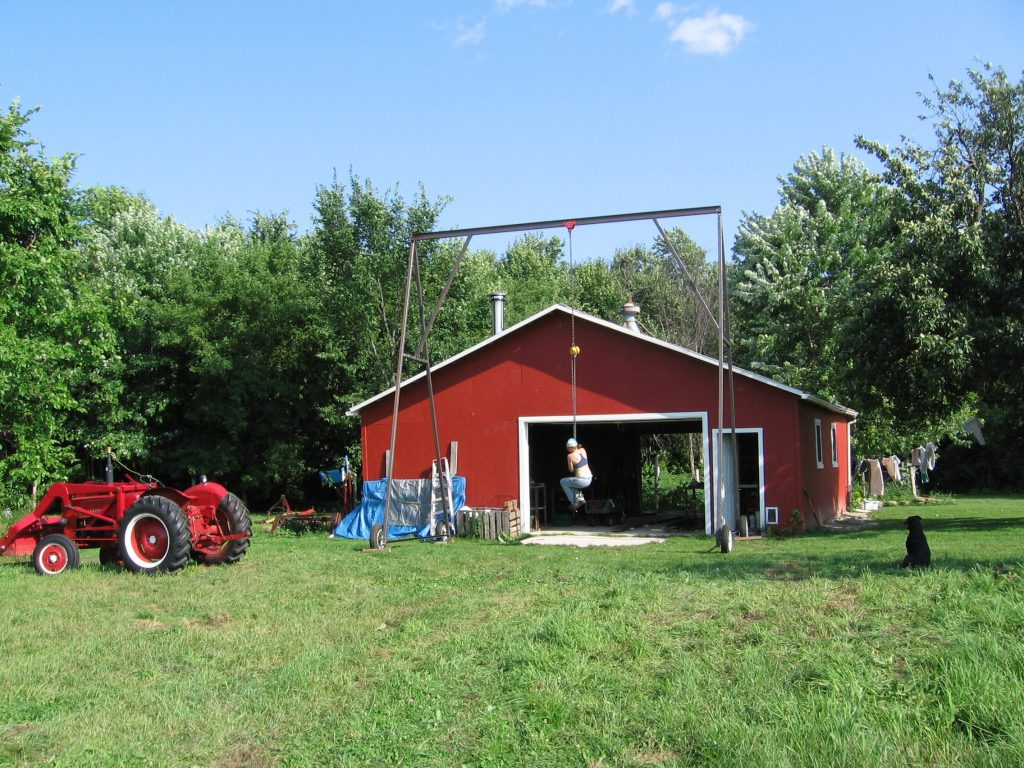
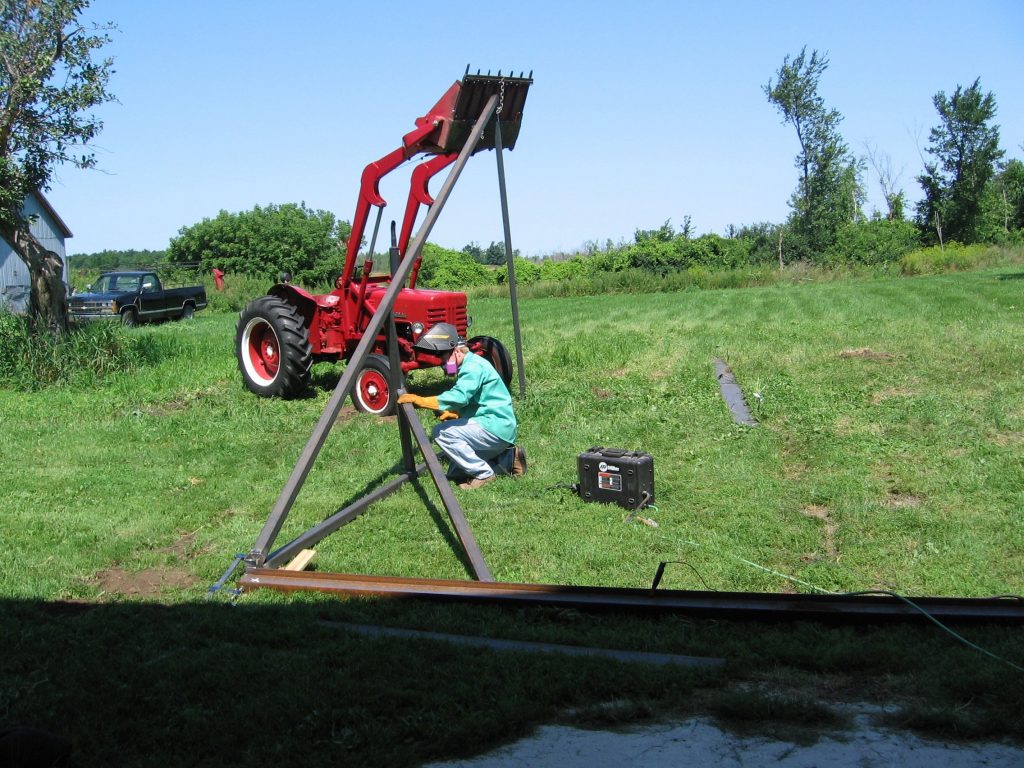
We were getting ready to lift large, heavy pieces. All the setup effort was aimed at handling these massive elements safely—a crucial step before moving on to the actual construction.
